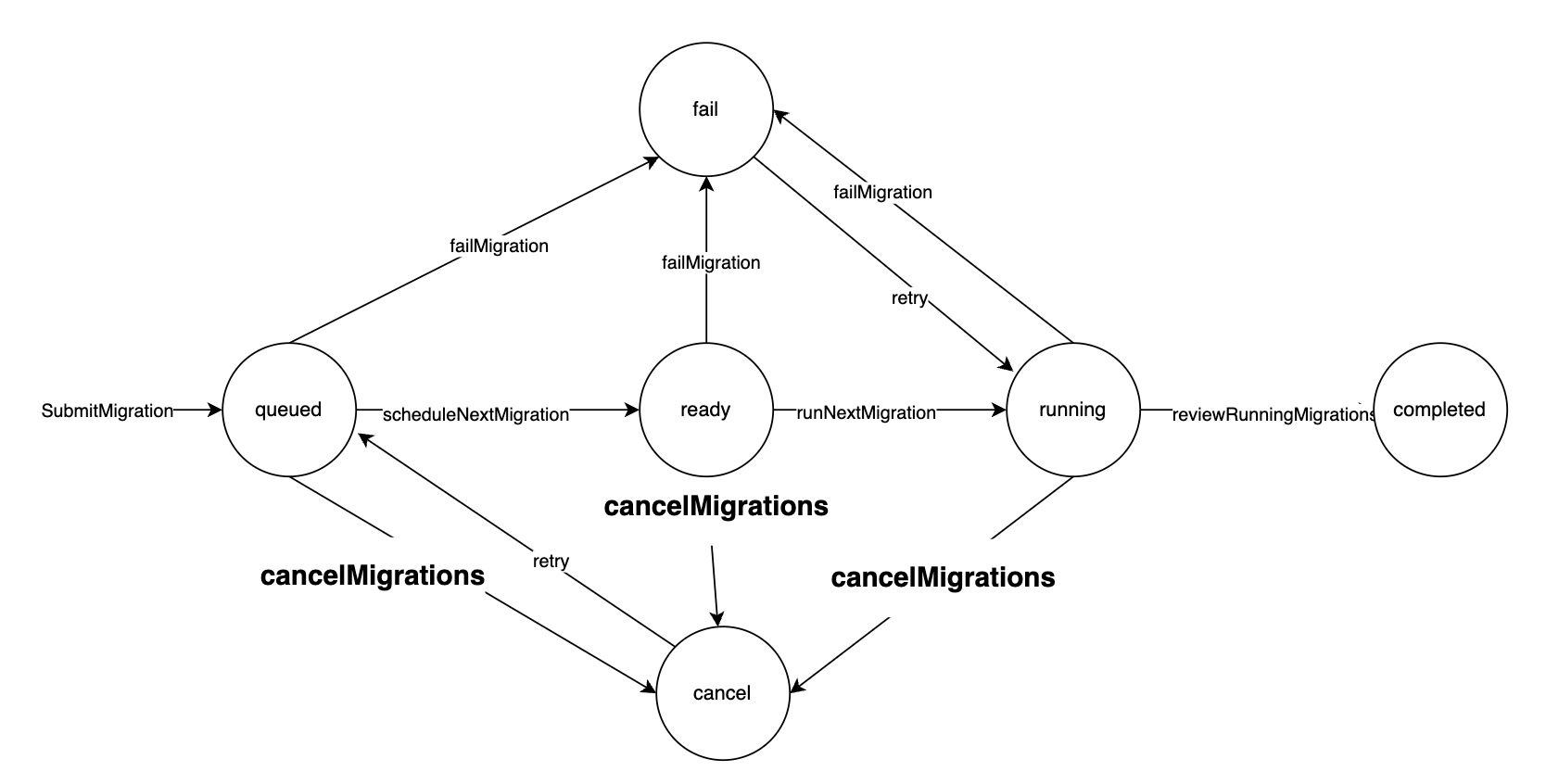In-Depth Understanding of the Online DDL Scheduler
Introduction
The lifecycle of an online DDL begins once it is inserted into the schema_migration table. This article provides a detailed explanation of when state transitions occur and what actions the vttablet performs in each state.
States
The states of online DDL include queued, ready, running, complete, fail, cancel, and pause.
queued: Newly created online DDL, the initial state.ready: Online DDL prepared for execution.running: Online DDL in progress, including the creation of shadow tables, generation of select and insert statements, and initiation of Vreplication tasks.complete: Online DDL execution finished, entering this state after the cutover is complete.fail: Execution fails due to internal errors. Error details can be diagnosed using themessagefield with the corresponding uuid.cancel: WeSQL providesalter schema_migrationto cancel an online DDL task. Tasks in this state can be re-executed using theretrycommand.pause: Currently under development, this feature can pause online DDL tasks inqueue,ready, orrunningstates.
State transition diagram (needs to be updated with the addition of pause):

Scheduling
In the primary vttablet, a periodic task executes onMigrationCheckTick to update the status of the DDL. Each invocation of this function updates the current state of the state machine.
queued→ready: In each Tick, only one online DDL task can move fromqueuedtoready. This state is designed to support thepostpone-completefeature, scheduling thequeuedonline DDL with the smallest id toready. Note that DDLs with-postpone-completewill not be scheduled in this cycle.ready→running: Transitioning from ready to running requires checking if any online DDL is currently running. By default, WeSQL allows only one DDL to be in therunningstate at a time. However, you can set the flagallow-concurrentfor online DDLs to allow parallel execution. In parallel mode, vttablet checks if the scheduled DDL conflicts with those running, by checking if they perform DDL on the same table.running→complete: For simple DDLs like create and drop, no specific actions are required. For drop table operations, WeSQL internally has a tableGC function, refer to article…. For alter DDLs, during the transition from running to complete, a cutover takes place (using the newly created shadow table to replace the original table). For details on how the cutover is performed, refer to….status→fail: Any internal error causing the failure of online DDL execution will lead to thefailstate. If in thefailstate, themessagecorresponding to the online DDL's uuid can be checked for error diagnostics.status→cancel: Online DDL tasks canceled using thecancelcommand will enter this state. Executingretrywill restart the DDL, but it will not resume from the breakpoint.
Timeline
- When is the shadow table created for alter: The creation of shadow tables and other operations occur during the transition from
readytorunning. - When does cutover for alter occur: The primary tablet performs cutover when the difference between the source table and the target (shadow table) falls below a certain threshold. This process will briefly lock the table.
- What is Vreplication doing during
running: For specifics, refer to the document on Vreplication.